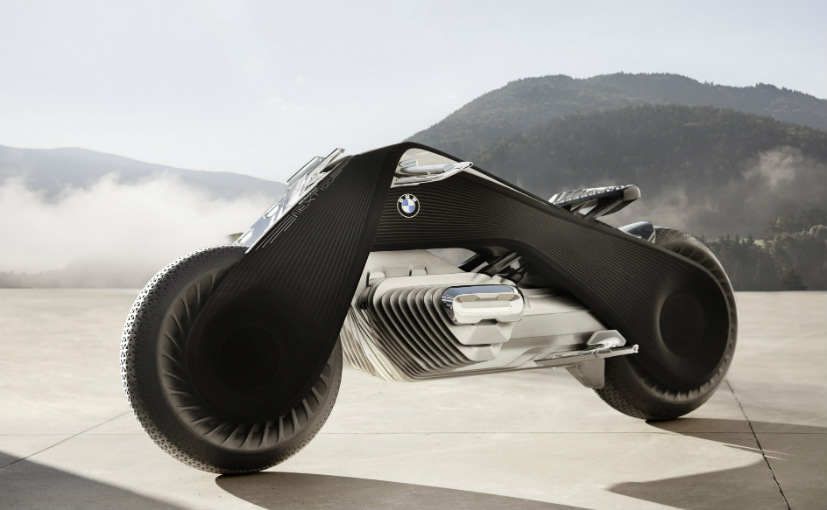BMW has revealed its long-term vision for its motorcycle division, BMW Motorrad. The company revealed the concept model of the Vision Next 100. The motorcycle is so technologically advanced that, in theory, it would not be necessary to wear a helmet when driving it.
The Motorcycle
The model is an entire redesign from the concept of a motorcycle. For example, the Vision Next 100 does not need any kind of suspension, thanks to BMW’s self-coined Flexframe technology. Instead, the two wheels are designed to absorb all shocks and bumps. For steering, instead of the front wheel changing direction through a pivot, the entire frame changes shape in order to realise the course of direction. Most prominently, the motorcycle houses several technological features that allow the motorcycle to never fall over. This feature adds a great deal of safety to riders of all experience levels. Lastly, in line with BMW’s overall target of increasing environmental sustainability, the conceptual model is based on a zero-emissions technology.
The Wearables
BMW’s technology implementations do not stop at the motorcycle itself. The rider is also immersed in technological novelties. Literally. The gear is divided in two parts: a bodysuit and a visor. As there is no risk of tipping over, the bodysuit is very light and the visor does not need to have a helmet component.
The visor is able to display all kinds of data to the rider, depending on the situation on the road and where the rider is looking. For example, regarding distraction issues, data displays are brought to a minimum when the rider looks straight ahead. When the rider looks up, however, a camera mounted at the back of the motorcycle will allow the rider to view what is happening behind him or her. Also, the display will alert the rider of road hazards and it will propose suitable approaches to turns. If the rider does not adhere to the suggestions and is risking an unsafe approach to a turn, the bike will correct its positioning itself in order to prevent a crash.
The bodysuit also mainly serves as a conveyer of information. Besides the more traditional functions of keeping the temperature of the rider on a suitable level and providing support to the body during long journeys, the suit also allows navigation to work through the suit. For example, vibrations in the right arm signal the need to turn right, and the other way around for the left arm.
The Vision
Although the extensive implementations of technology make it seem like BMW is going towards self-driving motorcycles, their actual goal is the exact opposite. Everything to add, every feature they implement, is to empower the rider to fully experience the forces unleashed when riding a motorcycle. Free from restrictive gear and enabled by technology to fully commit to a perfect riding experience. So, very different from the car industry’s destination focus, BMW’s vision is fully geared towards enhancing the journey itself. With the synergy between man, tech and machine, getting from A to B has gotten a lot more exciting.
References:
Howard, B. (2016). BMW’s 100-year vision: a smart motorcycle that won’t tip or crash | ExtremeTech. [online] ExtremeTech. Available at: http://www.extremetech.com/extreme/236446-bmw-vision-next-100-smart-motorcycle [Accessed 14 Oct. 2016].



